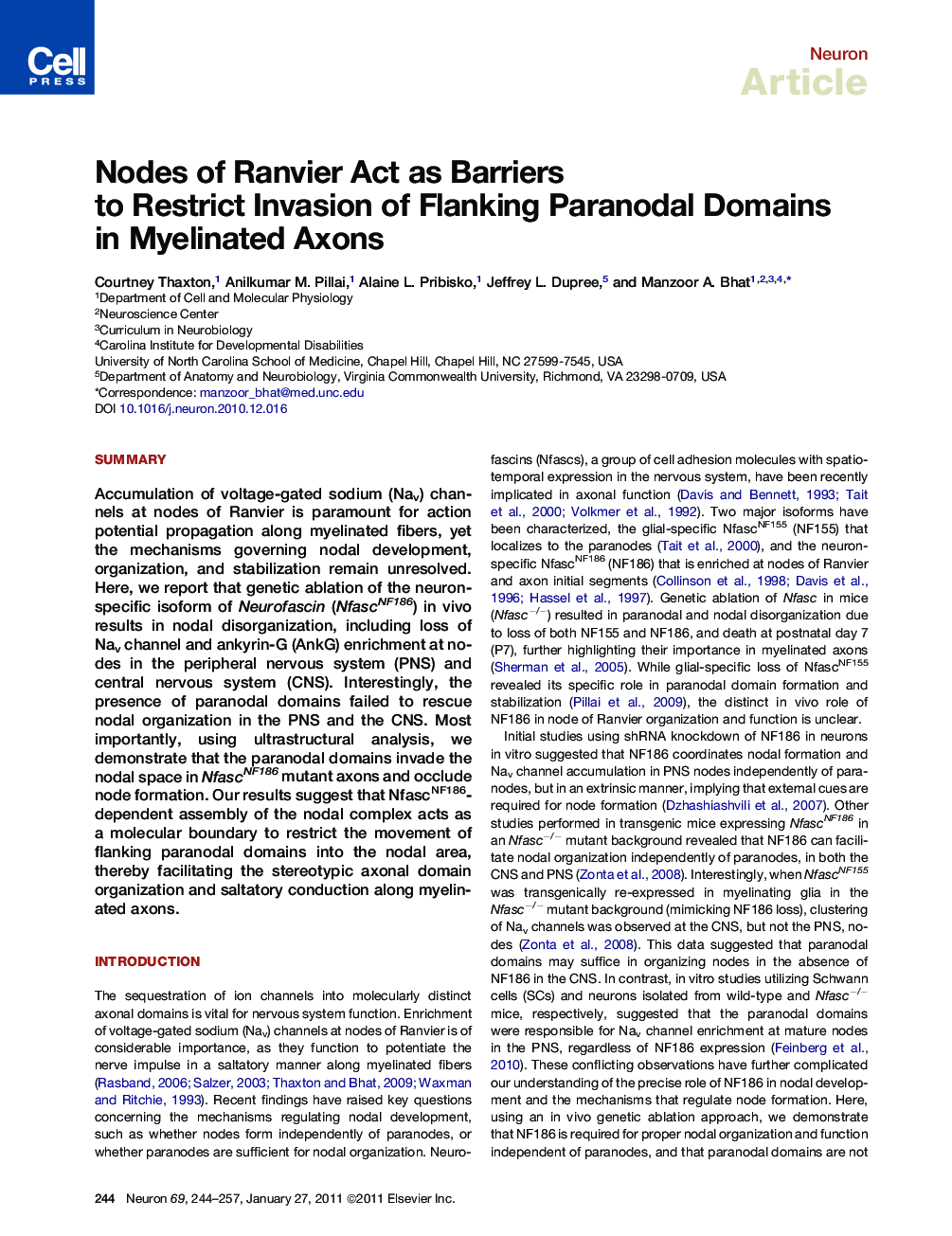| Article ID | Journal | Published Year | Pages | File Type |
|---|---|---|---|---|
| 4322224 | Neuron | 2011 | 14 Pages |
SummaryAccumulation of voltage-gated sodium (Nav) channels at nodes of Ranvier is paramount for action potential propagation along myelinated fibers, yet the mechanisms governing nodal development, organization, and stabilization remain unresolved. Here, we report that genetic ablation of the neuron-specific isoform of Neurofascin (NfascNF186) in vivo results in nodal disorganization, including loss of Nav channel and ankyrin-G (AnkG) enrichment at nodes in the peripheral nervous system (PNS) and central nervous system (CNS). Interestingly, the presence of paranodal domains failed to rescue nodal organization in the PNS and the CNS. Most importantly, using ultrastructural analysis, we demonstrate that the paranodal domains invade the nodal space in NfascNF186 mutant axons and occlude node formation. Our results suggest that NfascNF186-dependent assembly of the nodal complex acts as a molecular boundary to restrict the movement of flanking paranodal domains into the nodal area, thereby facilitating the stereotypic axonal domain organization and saltatory conduction along myelinated axons.
► Nodal organization requires NF186 in the CNS and the PNS ► Clustering of sodium channels and anykrin-G fails to occur in NF186 null nodes ► Paranodal domains do not rescue node formation in the absence of NF186 ► NF186-dependent complex at nodes serves as a barrier to prevent paranodal invasion
